On 28 July 1540, King Henry VIII married Catherine Howard, the same day as the execution of Thomas Cromwell, Earl of Essex, his chief minister, who had orchestrated his disastrous fourth marriage to Anne of Cleves. Catherine was the niece of Cromwell’s bitter political rival, Thomas Howard, Duke of Norfolk. Sixteen months later the much-married monarch was informed that his beautiful fifth wife had been accused of dalliances, before and after the royal marriage.
At Hampton Court on 6 November 1541 Queen Catherine was informed of the allegations against her and subsequently questioned by Archbishop Cranmer. The king then left Hampton Court, never to see his wife again. In her confession, Catherine admitted that when she was “but a yong gyrle” living in the household of her step-grandmother, the Dowager Duchess of Norfolk, she had permitted Henry Manox (her music teacher, who had arrived in the Duchess’s household in 1536), to “handle and towche the secrett partz of my body”, and that in the late autumn-winter of 1538-9, Francis Dereham (a kinsman and formerly a gentleman pensioner of her uncle, the Duke of Norfolk, who had entered the dowager’s service in 1537) had “used me in suche sorte as a man doith with his wyff many and sondry tymez”. It was soon discovered that after her marriage, Thomas Culpeper, a gentleman of the privy chamber, had replaced Dereham in her affections, but they were both adamant they had not proceeded beyond words.
The queen’s coffers and chests were sealed, the doors guarded and her jewels were placed in the custody of Henry Seymour (Lady Cromwell’s brother). On 14 November Queen Catherine’s household was disbanded and she was moved, with several carefully chosen royal servants and four of her ladies, to the former monastery of Syon. The Imperial ambassador, Eustache Chapuys observed that she was “making good cheer, fatter and more beautiful than ever, taking great care to be well apparelled and more imperious and troublesome to serve than even when she was with the King.” Later that month she was stripped of her title as queen and on 13 February 1542 Catherine, and her accomplice, Lady Rochford, widow of George Boleyn, would die on the scaffold.
In September 1540 the French ambassador, Charles de Marillac described Queen Catherine as “a young lady of mediocre beauty but of greater grace, small and slender in stature; her countenance is modest, soft and gentle”. Catherine’s contemporaries and near-contemporaries commented on her beauty and grace, but especially her youth. The majority of the maids of honour from 1539-41 were born c. 1524, except for Anne Bassett (born c. 1521), whose stepfather was imprisoned in the Tower following accusations of treason and Mary Norris (born c. 1521-2), whose father had been executed in 1536. Anne and Mary had both served Queen Jane Seymour, but their marital prospects were hampered by their family misfortunes.
Estimates of Catherine Howard’s year of birth range from 1518 to 1525, but if she were significantly older than her fellow maids of honour, she could hardly be described as youthful! The anonymous and “occasionally accurate” writer of the Spanish Chronicle claimed that Catherine was “not more than fifteen” when she arrived at court. The French ambassador stated that Dereham “kept the lady from the time he violated her at the age of 13 until 18”. The ambassador was not in possession of all the facts, however, and his comment is open to interpretation; he was unaware of the “furtive fondling” of Henry Manox, assuming that the queen’s relationship with Dereham had lasted five years (from 1536- 41) and that it had continued after the royal marriage. It seems likely that Catherine was born in late 1524: her affair with Dereham commenced in the autumn of 1538, before her fourteenth birthday and she arrived at court in the late autumn of 1539, shortly after her fifteenth birthday.

1. Portrait miniature of Catherine Howard, c.1540, Hans Holbein the Younger
There is no undisputed contemporary likeness of Queen Catherine Howard in existence although she has been associated with several portraits since the seventeenth-century. Her portraits may have been destroyed after her execution, or hidden away and her identity forgotten, only to be rediscovered and become the subject of debate.
There are two extant miniature portraits of a lady by Hans Holbein the Younger (Figs 1 and 2). The most compelling argument in favour of the sitter’s regal status is that the large ruby, emerald and pearl jewel which the lady wears is the same as that shown in a panel portrait of Henry VIII’s third queen, Jane Seymour (studio of Hans Holbein, Mauritshuis, The Hague) (Fig. 4) and that this, and her carcanet (necklace) of pearls and rubies set in goldsmith’s work, may have been given to Catherine Howard by Henry VIII on their marriage in 1540.
The first, Portrait Miniature of Catherine Howard, now in the collection of the Duke of Buccleuch and Queensberry (Fig. 1), is known to have been in the collection of Thomas Howard, Earl of Arundel (1586-1646), and while in his possession, was engraved by Wenceslas Hollar as an unnamed sitter. It was engraved by Cornelis Martinus Vermeulen as Catherine Howard in the late seventeenth century, and as Catherine Howard, Queen of K. Henry VIII by Jacobus Houbraken for Thomas Birch’s Heads of Illustrious Persons of Great Britain (1743).
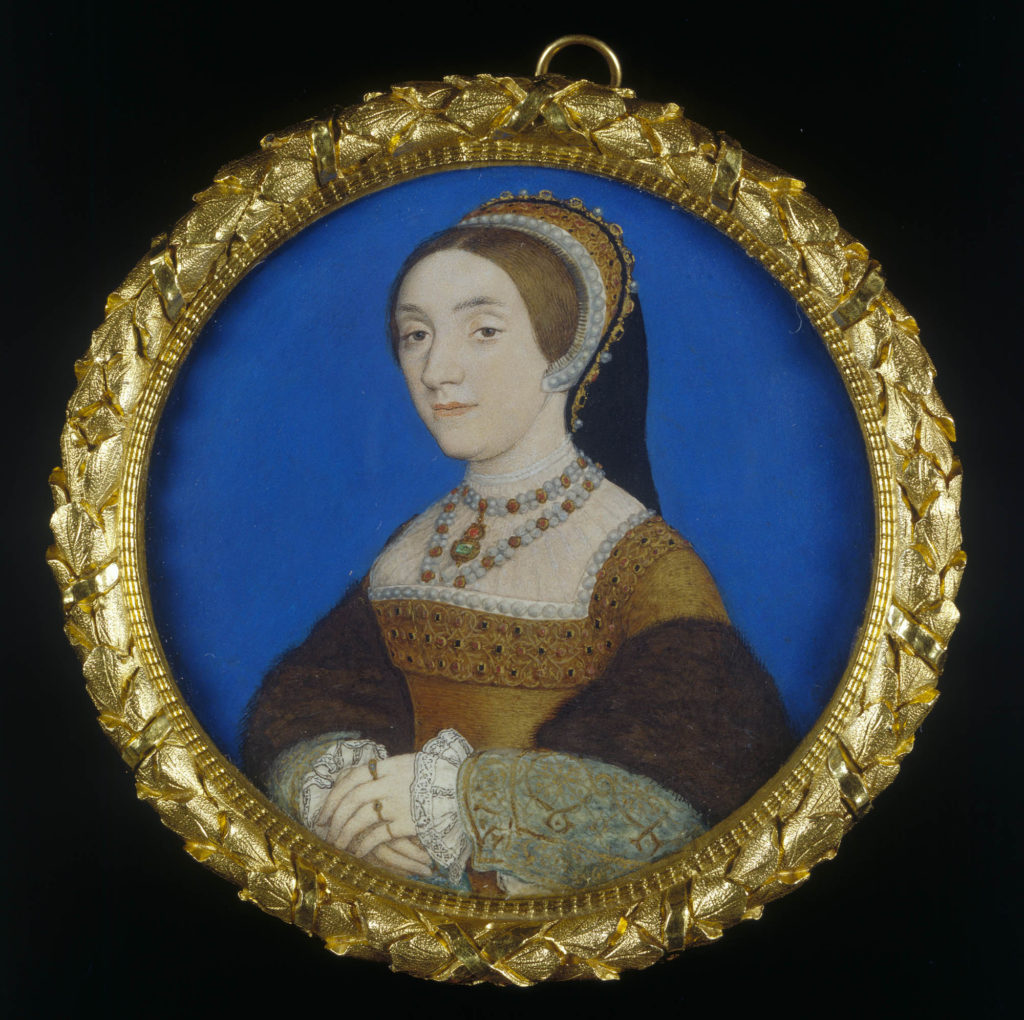
2. Portrait of a Lady, perhaps Catherine Howard (1520-1542) c. 1540, Hans Holbein the Younger
When a second miniature, was first recorded in the Royal Collection in around 1837, it was also described as Henry VIII’s fifth queen (Fig. 2). The earliest likely reference to the present miniature in the Royal Collection is in the Inventory of goods recovered at the Restoration by Col. W. Hawley, 1660–61, where it may be identifiable as: ‘A small peice Inclineing of a woman after ye Dresse of Henry ye Eights wife by Peter Oliver’.
The miniatures are not identical: each sitter has auburn hair and a fair complexion; the lady in the Royal Collection portrait appears to have brown eyes while the other’s are blue-grey; the jewels on the upper billaments of their French hoods are in reverse order, the arrangement of the jewels on their respective bodices is not identical and the embroidery on the cuffs is not the same. It is conceivable, however, that her sumptuous attire and jewels are an indication of her regal status. David Starkey in Six wives: the queens of Henry VIII (2003) noted that:
“Dispute has raged as to whether the subject really is Catherine. But the identification of the jewels settles the issue once and for all …”
Art historians have so far been reluctant to accept these little pictures as depictions of Queen Catherine Howard. The lady’s sumptuous attire, featuring cloth of gold and cloth of silver, lavish embroidery, the sable on her sleeves as well as her exquisite jewellery denotes a lady of the highest echelons of society. Her double-looped necklace, comprising quatrefoils of pearls alternating with rubies set in goldsmith’s work and several pieces of the sitter’s jewellery including the large ruby, emerald and pearl pendant jewel, appear not only in royal inventories, but also correspond closely or exactly to those seen in portraits of Henry VIII’s other wives.
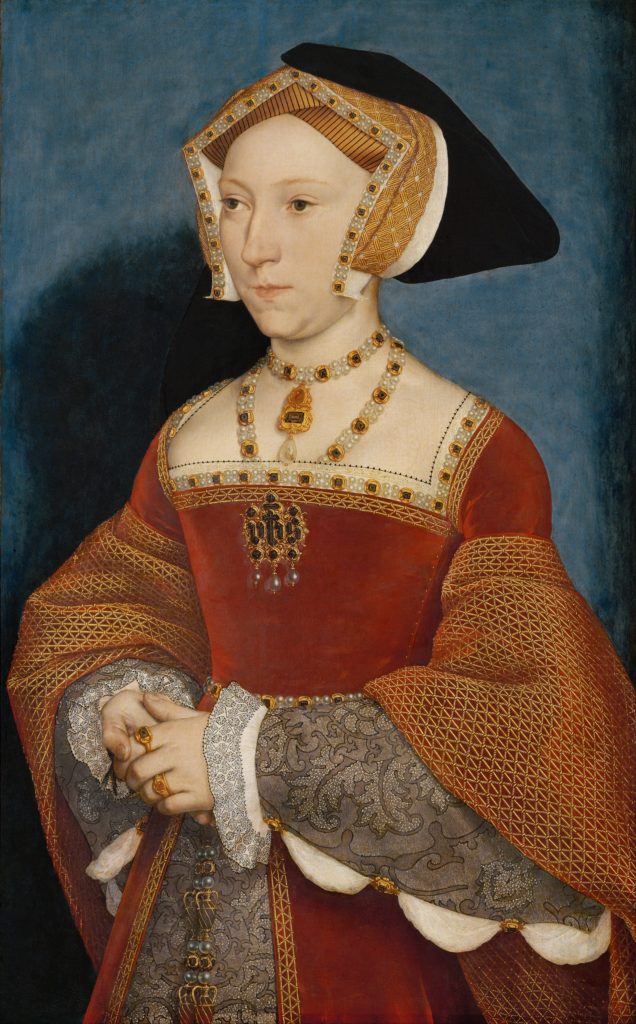
3 Jane Seymour, c.1536-7, Hans Holbein the Younger, Kunsthistorisches Museum, Vienna
The pendant worn by Jane Seymour in a portrait by Hans Holbein at the Kunsthistorisches Museum, Vienna (Fig. 3) is similar but not the same as that worn by “Catherine Howard” (Figs 1 and 2). It may however be identified in an inventory of Catherine Howard’s jewels: “one ouche of gold wherein is a fair pointed diamond and a fair ruby with a very fair pearl hanging at the same.”
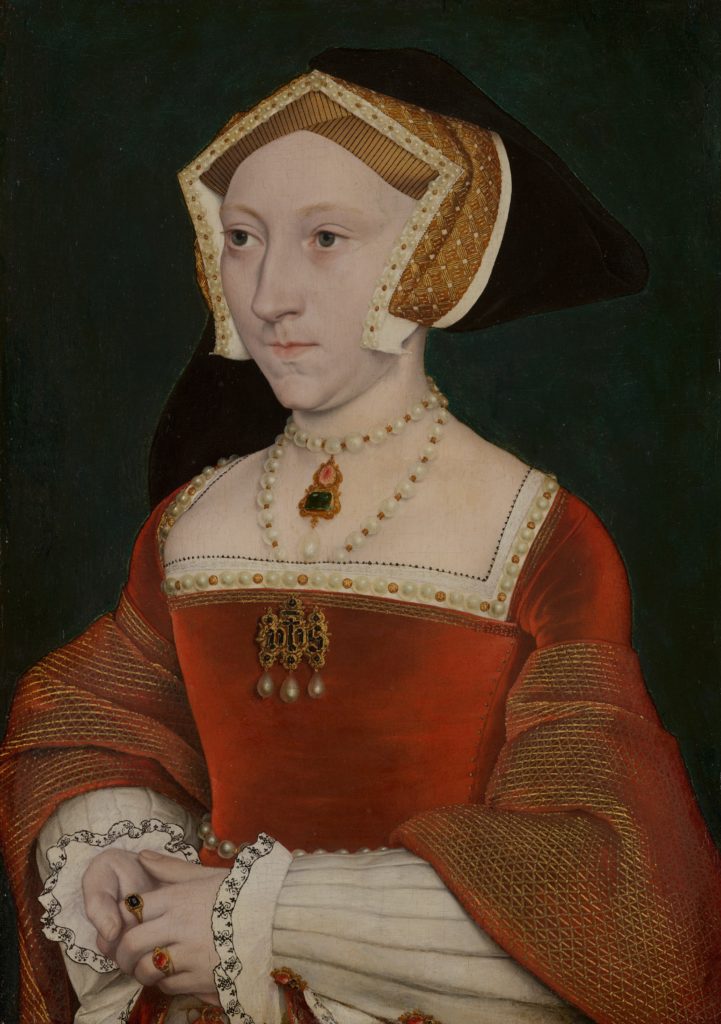
4. Jane Seymour, c.1540, studio of Hans Holbein, Mauritshuis, The Hague
The pendant with a ruby and an emerald worn by Jane Seymour in a portrait originating from the studio of Hans Holbein at the Mauritshuis, The Hague (Fig. 4) is identical to that worn by “Catherine Howard” (Figs 1 and 2). According to art historian Roland Hui, ‘this is almost certainly the one described in an inventory of her jewels as “an ooche (pendant) of gold enameled, containing one very fair Balas (a ruby that is) and one emerald with a very fair pearl hanging at the same”’. An identical pendant can be identified in an inventory of Catherine Parr’s jewels: an “ooche or flower with a ruby and an emerald and a pearl pendant”. This was not a unique design however, as an inventory of Lady Rochford’s possessions taken after her arrest included a similar pendant: “a flower (pendant) with a ruby and a great emerald with a pearl pen[dent]”.

5. Queen Catherine Parr, The Hastings Portrait, undated, unknown artist
The double-looped necklace worn by “Catherine Howard” (Figs 1 and 2) closely resembles those seen in portraits of Henry VIII’s other wives, including Jane Seymour (Kunsthistorisches Museum) (Fig. 3) and is identical to that of Catherine Parr in the Hastings portrait (Fig. 5). The necklace and the pendant evidently belonged to a collection of jewels that were passed down, with additions and subtractions, from consort to consort.
The theory that Queen Jane Seymour’s ruby and emerald pendant might have been given to one of her favoured ladies-in-waiting, Mary, Lady Monteagle or Margaret Douglas or that either of these ladies was the subject of the miniatures by Hans Holbein seems improbable. A comparison with their known portraits negates that hypothesis. Lady Monteagle’s behaviour had been the subject of complaints by her husband to Thomas Cromwell in 1538 and she was not at court in the late 1530s and early 1540s. Margaret Douglas could not have been the subject of a portrait by Hans Holbein in the autumn of 1538, as Susan James has suggested, since the artist had left for Basel in August of that year, not returning until the following year. In October, 1543 when Matthew Stewart, Earl of Lennox declared his “fervant love and affection to his highness’s niece the Lady Margaret Douglas”, Holbein was on his deathbed, by November he was dead, long before the lady was preparing for her wedding in 1544.
Two panel portraits have been linked to Queen Catherine Howard (Figs 6 and 8) based on little more than optimism and a perceived likeness to the two miniatures (Figs 1 and 2), as well as an unfinished drawing of an unidentified woman by Hans Holbein, in the Royal Collection. In each case the lady is of high status: a lady of the Queen’s household, or the wife of a courtier; she is sumptuously dressed,
but not sumptuous enough for a queen, and she is wearing expensive jewellery. The first is a lady of twenty-one, an age Catherine Howard never reached; the second depicts a lady of seventeen, arguably older than Catherine Howard was before her marriage to the king in 1540. It seems improbable that Henry VIII would commission a portrait of his mistress given the need for secrecy amid sensitive negotiations to extricate himself from his marriage to Anne of Cleves.
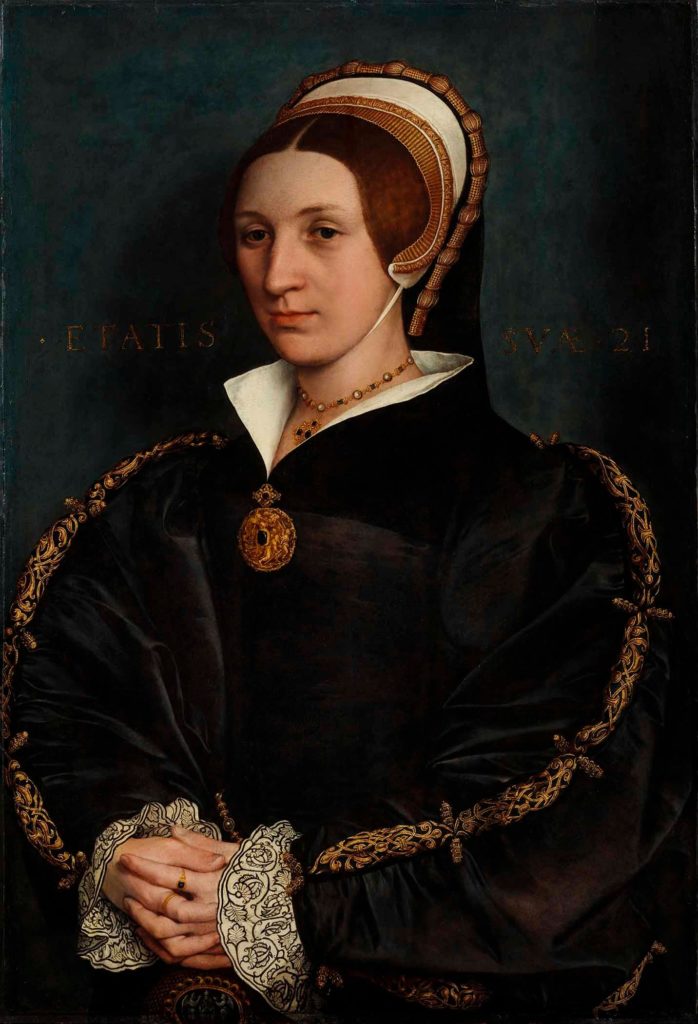
6. Portrait of a Lady, probably a Member of the Cromwell Family, c. 1535-40, Hans Holbein the Younger, Toledo Museum of Art
A lady aged twenty-one in the Portrait of a Lady, probably a Member of the Cromwell Family c.1540 by Hans Holbein (Toledo Museum of Art, Ohio) is probably Thomas Cromwell’s daughter-in-law, Elizabeth Seymour (Fig. 6). There are two extant copies of the portrait: a sixteenth century version at Hever Castle in Kent and another at the National Portrait Gallery in London dating from the late seventeenth century.
The Toledo portrait is acknowledged to be the original and painted by Hans Holbein circa 1535–1540. While the style of the lady’s sleeves dates to 1535-40, her French hood is more in keeping with those worn in the late 1530s and early 1540s, for example, Holbein’s portrait of Lady Audley, c. 1538 (Royal Collection) and Portrait of a Young Woman, c.1540-45 from the workshop of Hans Holbein (Metropolitan Museum of Art, New York)(Fig 8). This was a time when Thomas Cromwell was the most powerful man in the country, after the king, and considering his dynastic ambitions and patronage of Hans Holbein, someone most likely to have commissioned portraits of himself and his family. Through his son, Gregory’s marriage to Elizabeth Seymour, the Cromwell’s were related to royalty; she was therefore, a worthy subject of a portrait by Holbein.
The lady was identified as Queen Catherine Howard, on no real evidence, by British art historian Lionel Cust, after linking it with a seventeenth century version in the National Portrait Gallery, as well as the subject of a miniature in two versions (Figs 1 and 2), and a drawing in the Royal Collection. His findings were published in the Burlington Magazine in 1910. Cust’s identification was overturned (with some justification) by Roy Strong in 1967 who argued that the sitter was more likely to be a member of the Cromwell family, possibly Elizabeth Seymour, Lady Cromwell (c.1518-1568), the wife of Gregory Cromwell (c.1520-1551).
The association of this portrait with Elizabeth Seymour has met with determined resistance, especially since the historical record contains numerous, often egregious, errors concerning her life, her three husbands and her status at Court. Estimates of her year of her birth, ranging from 1500 to 1513, are the result of ill-informed guesswork stemming from the misdating of her first and second husbands’ years of birth. The year of her death of 1562/3 is simply a mistake by the editor of The Complete Peerage.
While the Toledo portrait and the NPG version are known to have Cromwell provenances, the claim by Bendor Grosvenor, Alasdair Hawkyard and David Starkey in the Lost faces exhibition catalogue (2007) that there is no evidence that the Hever portrait (formerly at Trentham Hall, seat of the Dukes of Sutherland) “shared a Cromwell provenance with either the original or the NPG version” should be challenged. If we look at the pedigree of George Granville Sutherland-Leveson-Gower, 2nd Duke of Sutherland (Fig. 7), we find in the early eighteenth century, Jane Powlett, Countess of Bridgewater (d. 1716), a descendant (on her father’s side) of John Paulet 2nd Marquess of Winchester, the man who married Elizabeth Seymour in 1554 and who just might have commissioned a portrait of his wife! Jane Powlett’s great-aunt, Bridget Whitmore, was a descendant of Jane Cromwell, Thomas Cromwell’s illegitimate daughter. In the same pedigree: Sir William Leveson-Gower (d. 1691) was the uncle of John Carteret (d. 1763) 2nd Earl Granville, father-in-law of Lionel Tollemache, 4th Earl of Dysart and grandfather of Lionel Tollemache, 5th Earl of Dysart, who married Charlotte Walpole, the illegitimate niece of Horace Walpole. The Earls of Dysart are descendants of Lionel Tollemache and Catherine Cromwell (d. 1621), who was Elizabeth Seymour’s granddaughter.

7. Pedigree of George Granville, 2nd Duke of Sutherland
Alison Weir, in The lost Tudor princess (2016), opined that the costume “was rather lavish for the daughter of a knight and wife of a gentleman”, noting that the existence of two copies as well as a resemblance to the lady in the miniatures meant that she was more likely to be Queen Catherine than Cromwell’s daughter-in-law. Elizabeth Seymour, as the widow of Sir Anthony Ughtred, formally outranked her second husband. She was known by her superior courtesy title of Lady Ughtred after her marriage to Gregory Cromwell in August 1537 until April 1540. On 1 March 1538, the Lady Mary stood godmother at the baptism of the couple’s first child, Henry, probably at Hampton Court, where she gave forty shillings to the nurse and midwife as well as an expensive cup for “my lady Outred Child”. In April 1540 after the elevation of Thomas Cromwell as Earl of Essex, Gregory Cromwell assumed his father’s secondary title of Baron Cromwell, and Lady Ughtred became (briefly) “Lady Cromwell”, then “Mistress Cromwell” on his fall from power, and back to “Lady Cromwell” in December of that year when her husband was made Baron Cromwell in his own right. The number of copies of a portrait denotes importance, not necessarily royal status; for example, there are two extant copies of Hans Holbein’s portrait of Lady Guildford, and there were two copies (one now lost) of a portrait of Lady Lee, originating from the workshop of Hans Holbein. Elizabeth Seymour could claim kinship to two of Henry VIII’s wives: Anne Boleyn and Catherine Howard; she was their second cousin. Siblings do not necessarily look alike, for example, Catherine and Mary Grey, while cousins and unrelated people often share striking similarities.
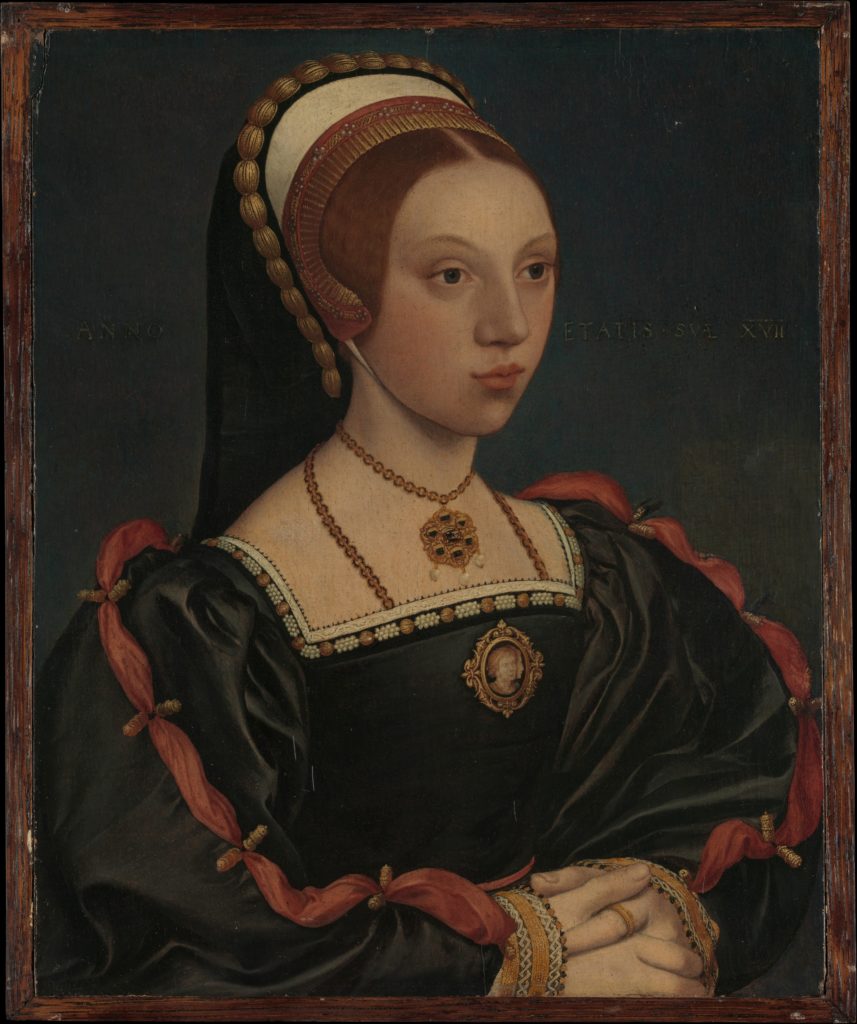
8. Portrait of a Young Woman, c. 1540-45, Workshop of Hans Holbein the Younger, Metropolitan Museum of Art, New York
A young woman aged seventeen in the Portrait of a Young Woman, c.1540-45 from the workshop of Hans Holbein at the Metropolitan Museum of Art, New York (Fig 8) remains unidentified. Given her lavish costume, this seventeen-year-old woman must have been of high status. (Fig. 7) The pendant, which hangs from a black enamelled chain around her neck appears to be an adaptation of a design by Holbein and the gold setting for her cameo was probably his work. Susan James and Jamie Franco in Susanna Horenbout, Levina Teerlinc and the mask of royalty (2000) have argued that this portrait and Portrait of an Unknown Lady, c.1535 attributed to Lucas Horenbout at the Yale Center for British Art depict Catherine Howard. There is no consensus on the sitter’s identity however and “although the portraits share certain details of costume and ornament their physiognomies are strikingly different.” The young woman’s clothing and jewels, although lavish, are not sumptuous enough for a queen, nor is there is anything unique in her clothing or jewellery to link her to Catherine Howard. The claim that her clothing is too lavish for a maid of honour or a lady of the court is at odds with the correspondence between Lady Lisle and John Husee, her agent in London, when her daughter, Anne Bassett, was given a place in Queen Jane Seymour’s household in 1537. Maids of honour were expected to adhere to a strict (and ruinously expensive) dress code: they were required to wear silk, satin, velvet and other expensive fabrics, as well as hoods with an edge of pearl. They were at court to find a husband, and to serve the queen, consequently they were required to be suitably attired “according to their degree” (that is, their position in the household).
The young woman could be one of the ladies of the Queen’s household or the wife of one of the gentlemen of the privy chamber. She might be Queen Catherine’s kinswoman, Mary Norris, born c. 1521-2, who wed Sir George Carew in 1540, and to whom the queen presented a necklace “against her marriage” at New Year in 1541. Another candidate, given Thomas Cromwell’s patronage of Hans Holbein, is Frances Murfyn, born circa 1520-1, the wife of his nephew, Richard Cromwell, whose son and heir, Henry was born in 1537 and whose wife was about the right age to be the sitter in 1538-9.
Brett Dolman’s observation that “Catherine left no documentary proof that her portrait was ever painted during her lifetime, and, perhaps we are searching for the impossible” is probably true in the case of a panel portrait. The miniatures, however, are very likely to be depictions of Queen Catherine Howard. Queen Marguerite of Navarre attempted to obtain portraits of Henry VIII, Catherine Howard as well as Prince Edward, Mary and Elizabeth on four occasions from late October to late December in 1540, but it is unclear whether the portraits were ever executed. It is interesting that the requests came in the late autumn-winter of 1540, since the lady in question is wearing both a partlet and fur, indicating that she was painted in the colder months.
By Teri Fitzgerald
Read more about Elizabeth Seymour and the Toledo portrait:
Fitzgerald, Teri (18 August 2019). “All That Glitters: Hans Holbein’s Lady of the Cromwell Family“. (Queenanneboleyn.com)


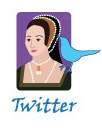




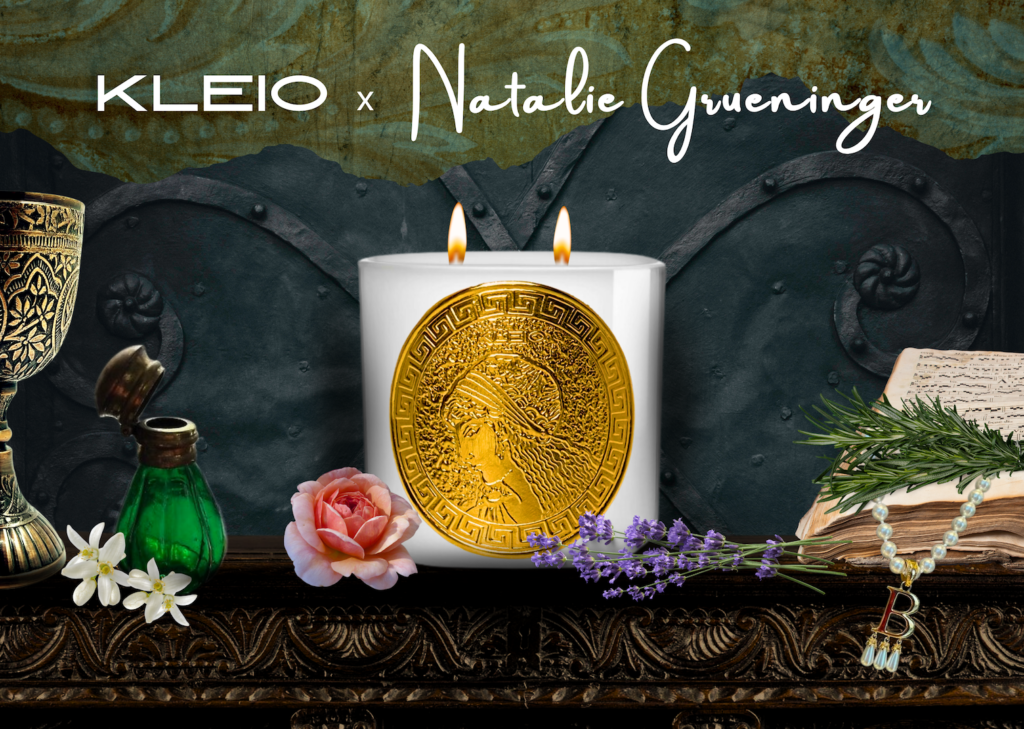













Interesting article! Thanks for sharing. Michelle t